What is a CNC Wire Bending Machine?
Struggling with inconsistent manual wire bending? Need parts made faster and more accurately? A CNC wire bending machine could be the solution you are looking for.
A CNC wire bending machine is an automated tool that uses computer numerical control (CNC) to precisely shape wire.^1 It takes wire from a coil, straightens it, then bends and cuts it according to programmed instructions, creating consistent parts efficiently.
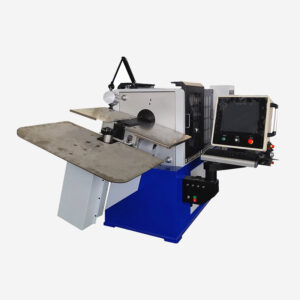 CNC7-80
CNC7-80
Now that you have a basic idea, you might wonder how these machines achieve such precision and what makes them tick. Let’s explore the inner workings and the different types available.
How Does a CNC Wire Bending Machine Work?
Confused about how a simple wire turns into a complex shape automatically? Curious about the mechanics behind the process? Let’s break down the steps involved.
These machines work by feeding wire from a spool, passing it through a straightening unit, and then using computer-controlled motors and tools to bend it into the desired shape before cutting it off.^1 Accuracy relies heavily on precise wire feeding and bending angles.^2
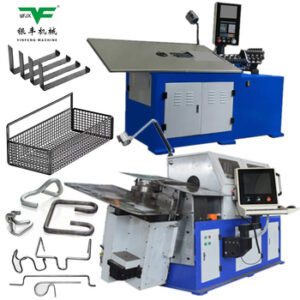
Let’s dive deeper into the operational flow. The process seems simple from the outside, but several key actions happen in sequence to ensure the final product meets specifications. It starts with the raw material, usually a large coil of wire.
The Bending Process Explained
The machine pulls the wire from the coil using a wire feeder mechanism. This feed needs to be exact because it determines the length of each segment of the final part. Next, the wire goes through a straightening device. This step is critical because any kinks or curves in the raw wire would lead to inaccurate bends and inconsistent final products. Once straight, the wire moves into the main processing area. Here, servo motors, guided by the CNC program, control the bending tools. These tools might include bending pins, rotating heads, or specialized dies. The wire is precisely bent at specific angles and points. For 3D shapes, the machine might also rotate the wire or use a rotating bending head.^1 Finally, after all bends are complete, a cutting mechanism snips the finished part from the continuous wire feed. The machine is then ready for the next cycle.
| Step | Action | Key Component(s) | Importance |
|---|---|---|---|
| 1. Wire Feeding | Pulls wire from the coil | Wire Feeder | Determines segment lengths^2 |
| 2. Straightening | Removes bends/kinks from the wire | Straightening Unit | Ensures accuracy |
| 3. Bending | Forms angles and curves | Bending Tools, Servos | Creates the desired shape^1 |
| 4. (Optional) Turn | Rotates wire or head for 3D shapes | Rotating Head/Axis | Enables complex geometry^1 |
| 5. Cutting | Separates the finished part from the feed | Cutting Mechanism | Completes the part |
The precision of the servo motors and the rigidity of the machine frame and tooling are crucial for maintaining stability and producing identical parts repeatedly.^2
What Types of CNC Bending Machines Are There?
Feeling overwhelmed by the different machine descriptions? Not sure if you need a 2D, 3D, or multi-axis machine? Understanding the categories helps narrow down your choices.
CNC wire bending machines are categorized mainly by their capability (2D vs. 3D), structure (like turning vs. non-turning wire), and the number of axes they operate on (e.g., 4-axis, 5-axis, 7-axis, up to 12-axis or more).^1
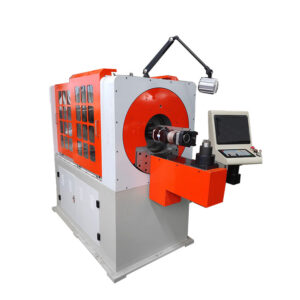
Let’s look closer at these classifications. The type of machine you need depends entirely on the complexity of the parts you plan to produce. Choosing the right type impacts efficiency, capability, and cost.
Understanding the Differences
The most basic distinction is between 2D and 3D machines.
- 2D Machines: These are often simpler, typically with fewer axes (like 4-axis plane machines). They are designed to bend wire within a single plane, creating flat shapes like specialized hooks, rings, or frame components.^3 They usually use a non-turning wire mechanism.^1
- 3D Machines: These are more complex and versatile. They can create intricate shapes that exist in three dimensions, such as complex springs, automotive seat frames, or wire baskets. They often feature more axes (like 5-axis rotating head or 7-axis machines) and might use turning line or turning head mechanisms to achieve the necessary rotations and bends.^1
The number of axes directly relates to the machine’s freedom of movement and complexity it can handle. A higher axis count generally means greater capability for complex bends and rotations. For example, a 4-axis machine might handle feeding, bending, and cutting in one plane, while a 7-axis machine adds rotations for true 3D forming.^3 Some systems even go up to 12 axes for highly specialized tasks.^1
| Machine Type | Dimension | Typical Axes | Complexity Handled | Common Structure | Example Applications |
|---|---|---|---|---|---|
| 2D Wire Bender | 2D | 4-axis^3 | Low to Medium | Non-turning wire^1 | Flat hooks, simple frames, wire craft components^3 |
| 3D Wire Bender | 3D | 5, 7+ axes^3 | Medium to High | Turning line/head^1 | Car seat frames, complex springs, baskets^1 |
| Multi-Axis (General) | 2D or 3D | 6, 8, 12+^1 | Varies (High) | Varies | Highly specialized industrial parts |
What About YF Wire Bending Machines?
Considering specific manufacturers? Heard about Yinfeng (YF) and want to know what they offer? Let’s examine their range of wire bending solutions.
Yinfeng (YF) provides both 2D and 3D CNC wire bending machines. Their lineup includes 4-axis plane models for 2D work, and 5-axis rotating head and 7-axis machines for complex 3D forming, handling wire sizes from 2.0mm up to 14.0mm.[^3][^5]
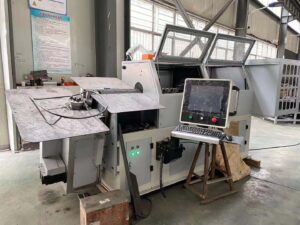
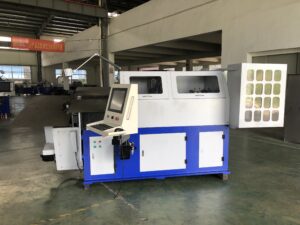

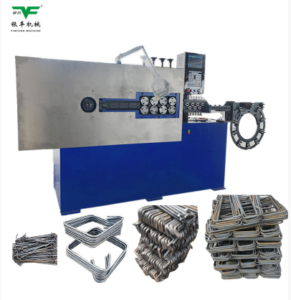
YF seems to cover a good range of needs based on their product descriptions. As someone who looks for reliable equipment, I find their specifications helpful. Let’s dive into the details of their models.
YF Model Specifics
YF categorizes their machines clearly, making it easier to match a machine to a task.
- 4-Axis Plane Machines: These are their primary 2D benders. They offer several models specifically designed for plane bending and forming, suitable for various wire crafts and simpler industrial parts. YF lists specific models like the YFCNC4-60 (2.0-6.0mm wire), YF-CNC4-80 (3.0-8.0mm), YF-CNC4-100 (4.0-10.0mm), YF-CNC4-120 (5.0-12.0mm), and even the YF-CNC4-140 (6.0-14.0mm). These models boast a high maximum wire feeding speed of 100 meters per minute.[^5] An interesting feature mentioned is the potential to integrate a welding machine, allowing forming and welding in one process.^3
- 5-Axis Rotating Head Machines: These step up the capability to handle 3D shapes by adding rotation.
- 7-Axis 3D Bending Machines: These offer even more complex forming capabilities for intricate three-dimensional parts.^3
Here’s a quick look at the specs for their 4-axis models based on the available data:
| YF Model | Wire Diameter (mm) | Axes | Max Feed Speed (m/min) | Primary Use |
|---|---|---|---|---|
| YF-CNC4-60 | Φ2.0 ~ Φ6.0 | 4 | Max. 100 | 2D Bending |
| YF-CNC4-80 | Φ3.0 ~ Φ8.0 | 4 | Max. 100 | 2D Bending |
| YF-CNC4-100 | Φ4.0 ~ Φ10.0 | 4 | Max. 100 | 2D Bending |
| YF-CNC4-120 | Φ5.0 ~ Φ12.0 | 4 | Max. 100 | 2D Bending |
| YF-CNC4-140 | Φ6.0 ~ Φ14.0 | 4 | Max. 100 | 2D Bending |
This range suggests YF aims to cater to businesses working with various wire sizes and complexities, starting from basic 2D shapes up to complex 3D components.
What Factors Influence Bending Machine Price?
Worried about the investment cost? Wondering what makes one machine more expensive than another? Let’s examine the key elements that determine the price tag.
The price of a CNC wire bending machine is influenced by its type (2D/3D), number of axes, the range of wire diameters it can handle, its production speed, brand reputation, included software/features, and after-sales support.
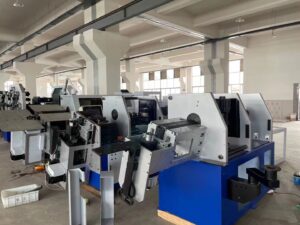 3D wire bending machine
3D wire bending machine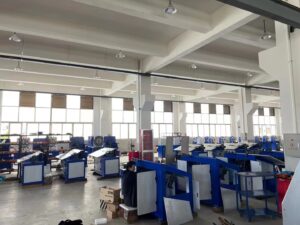 CNC 2D WIRE BENDING MACHINE IN STORE
CNC 2D WIRE BENDING MACHINE IN STORE
Understanding these factors helps you budget effectively and choose a machine that provides value for your specific needs. I always advise looking beyond the initial price.
Key Price Drivers
Several components contribute to the final cost of a CNC wire bending machine. It’s not just about the metal; it’s about the technology and capability packed inside.
- Complexity (Axes & Dimension): This is a major factor. A 3D machine with 7 axes will naturally cost more than a simpler 2D machine with 4 axes due to the additional motors, components, and more sophisticated control system needed.^3
- Capacity (Wire Size & Speed): Machines built to handle thicker wire diameters (like 12mm or 14mm[^5]) require stronger motors, heavier frames, and more robust tooling, increasing the cost. Similarly, higher production speeds often mean more advanced servo systems and controllers.[^2][^5]
- Technology & Features: Advanced control systems (like those using Windows interfaces or offering intelligent diagnostics^3), high-precision servo motors (sometimes imported^3), and additional features like integrated welding^3 or camera correction systems^3 add to the price.
- Brand & Build Quality: Established manufacturers often command higher prices due to proven reliability, build quality, and potentially better support. The origin of the machine (e.g., German vs. domestic) can also play a role.^1
- Support & Service: The level of training, warranty, and technical support included can influence the overall package price.
| Factor | Low Price Range Impact | High Price Range Impact | Related Info Source |
|---|---|---|---|
| Axes / Dimension | Fewer axes (e.g., 4), 2D only | More axes (e.g., 7+), 3D capability | ^1, ^3 |
| Wire Diameter Capacity | Smaller diameters (e.g., <6mm) | Larger diameters (e.g., >10mm) | [^5] |
| Speed / Performance | Standard speed | High speed, high precision servos | ^2, [^5] |
| Technology / Features | Basic controls, manual setup | Advanced CNC, automation, integrated options | ^3 |
| Brand / Build Quality | Lesser-known brand, standard build | Reputable brand, heavy-duty construction | ^1 |
| Support / Service | Minimal support, basic warranty | Comprehensive training, extended support | General Knowledge |
When I evaluate a machine, I weigh these factors against the production requirements. Sometimes a lower-spec machine is perfectly adequate, while other times, investing in higher capability pays off in the long run.
Conclusion
Choosing the right CNC wire bending machine involves understanding what they are, how they work, the various types available, and the factors determining their cost. Evaluate your needs carefully.
[^5]: YF 中英文样本册machinery 2024(1).pdf (Content related to specific YF 4-axis models, specs, speed)
